Xiaomi Redmi K30 Pro
$370 | 33000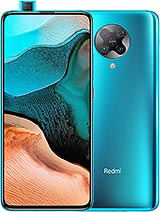
- 6.67" 1080x2400 pixels
- 64MP 4320p
- 6/8GB RAM Snapdragon 865
- 4700mAh Li-Po
Phone Finder
- Acer alcatel Allview Amazon Amoi Apple Archos Asus AT&T Benefon BenQ BenQ-Siemens Bird BlackBerry Blackview BLU Bosch BQ Casio Cat Celkon Chea Coolpad Cubot Dell Doogee Emporia Energizer Ericsson Eten Fairphone Fujitsu Siemens Garmin-Asus Gigabyte Gionee Google Haier HMD Honor HP HTC Huawei i-mate i-mobile Icemobile Infinix Innostream iNQ Intex itel Jolla Karbonn Kyocera Lava LeEco Lenovo LG Maxon Maxwest Meizu Micromax Microsoft Mitac Mitsubishi Modu Motorola MWg NEC Neonode NIU Nokia Nothing Nvidia O2 OnePlus Oppo Orange Oscal Oukitel Palm Panasonic Pantech Parla Philips Plum Posh Prestigio QMobile Qtek Razer Realme Sagem Samsung Sendo Sewon Sharp Siemens Sonim Sony Sony Ericsson Spice T-Mobile TCL Tecno Tel.Me. Telit Thuraya Toshiba Ulefone Umidigi Unnecto Vertu verykool vivo VK Mobile Vodafone Wiko WND XCute Xiaomi XOLO Yezz Yota YU ZTE
Xiaomi Redmi K30 Pro Summary
Redmi K30 Pro is one of the two phones in the Redmi K30 series announced back in March this year in China, three months after the arrival of the Redmi K30. The handset was announced alongside the Redmi K30 Pro Zoom Edition, which is a slightly-upgraded model of the K30 Pro. Two months after the official launch, the handset made its debut in Europe under the name “POCO F2 Pro”. The two phones have pretty much the same specs, except for two teeny-tiny differences, including weight and memory configuration.
Display
The Redmi K30 Pro features a full-screen display thanks to the pop-up camera design. The 6.67-inch Super AMOLED panel covers 87.2 percent of the front as well as supports 20:9 aspect ratio, FHD+ (2,400 x 1,080p) resolution, and HDR10+. One of the biggest disappointments of this phone is the 60Hz refresh rate. Many other high-end phones launched in the last few months have at least 90Hz or higher refresh rate. For example, the Realme X50 Pro or the OnePlus 8 both have a 90Hz display. However, what they don’t have is the full-screen display. Both of them feature the punch-hole display, which seems to be on every phone launched recently. Personally, I prefer the pop-up camera more than the punch-hole style.
The Redmi K30 Pro display can get up to 800 nits of brightness if you manually change the settings while it can hit up to 1200 nits of brightness if you go under the sun, as claimed by Xiaomi. Netflix HD is enabled on this phone, so if you are a movie fan, this is a great one to pick.
Under the display, it is equipped with an optical fingerprint reader, which is quite reliable. The screen reads my fingerprints 80 to 90 percent of the time.
Chipset
The Redmi K30 Pro is powered by the top-of-the-line Snapdragon 865 SoC, which is the most powerful chipset by Qualcomm at the moment. On paper, this chipset should be enough to power every task you need, including gaming. If you are looking for a good all-around phone that has a powerful performance, the Redmi K30 Pro is at the top of the list unless you want to go all-in on gaming, then, get a gaming-centric smartphone.
RAM & Storage
The POCO F2 Pro comes in two memory configurations - 6GB RAM LPDDR4X RAM + 128GB UFS 3.1 storage and 8GB LPDDR5 RAM + 256GB UFS 3.1 storage. The Redmi K30 Pro, on the other hand, is up for sales in three options:
6GB RAM + 128GB UFS 3.0 storage: CNY 2,999 ~ Rs. 32,000
8GB RAM + 128GB UFS 3.1 storage: CNY 3,399 ~ Rs. 36,000
8GB RAM + 256GB UFS 3.1 storage: CNY 3,699 ~ Rs. 39,900
Both models of the F2 Pro have UFS 3.1 storage, while the base version of the K30 Pro only has UFS 3.0 storage. You can see that the price difference between the 6GB + 128GB and 8GB + 128GB is around Rs. 4,000. I would say it is worth paying that Rs. 4,000 to get the 8GB RAM + 128GB. Not only you will get the much-faster UFS 3.1 storage, but you also get 8GB of RAM, which will certainly help the phone deliver a better performance.
During my time with the K30 Pro, I experienced only a few hiccups. The device ran smoothly even when I switched between PUBG Mobile and the camera app. It seems like the phone has a quick image processing time and it handles opening multiple apps with ease. Gaming performance is also a strength of this phone. I played Real Racing 3, Fortnite, PUBG Mobile, and several other 3D games, and I got a nearly-flawless gaming experience. Obviously, the phone got heated during an intensive gaming session, but it was not at a concerning level.
Battery
The battery of the Redmi K30 Pro is quite beefy as it has a capacity of 4,700 mAh. In comparison, the OnePlus 8 only has a 4,300 mAh battery and the Realme X50 Pro has a 4,200 mAh battery. While the OnePlus 8 and K30 Pro support 30W fast charging tech, the Realme X50 Pro’s 65W charging tech is much faster.
Don’t worry as it only takes around 64 minutes to fill the battery of the K30 Pro from 0 to 100 percent. Not just that, the battery life of the new Redmi phone is also very impressive thanks to MIUI’s aggressive RAM management, large battery capacity, and of course, the lack of high-refresh-rate display. During my time with the phone, my usage was not that heavy. I usually spent time on social media and listening to music using either Wi-Fi 5 at home or 4G network in other places. Obviously, don’t expect the phone to last more than 7 hours if you are a heavy user, especially if you are really into gaming. The phone doesn’t support wireless charging, but for me, it is quite unnecessary since wireless charging is not as fast as wired charging, so I don’t really care about it that much.
Camera
Moving to the back, Redmi K30 Pro carries a 4-camera system placed in a circular module. This camera cluster includes the main 64MP Sony IMX686 sensor with an aperture of f / 1.69, a 13MP ultra wide-angle sensor with a 123-degree viewing angle, a 2MP depth sensor, and a 5MP telephoto lens that doubles up as a macro camera. The selfie camera is in the pop-up module on the front and has a 20MP resolution. It seems like a decent camera setup, but there is nothing special to talk about, but it is still a massive improvement over the Redmi K20 Pro.
The photo quality of the K30 Pro is not really consistent. Its 64MP main sensor does a good job of picking up a good amount of detail and the colours are also well-balanced as well. There is also no over-saturation while its Realme counterparts tend to over-process the colours. However, I don’t like the high level of contrast, which can make the scenes look highly moody. In addition, you also have to toggle the HDR mode manually to lift the shadows to a reasonable level. In terms of low-light photography, the cameras don’t perform as good as they do in day-light conditions. The outcomes are too smooth and lack details.
If you want to get a good camera smartphone, Redmi is not the brand you should look for. Instead, OnePlus 8 might be a better option in the sub-Rs. 40,000 segment.
Xiaomi Redmi K30 Pro Full Specifications
- Dollas $370
- Rupee ₹33000
- Technology GSM / CDMA / HSPA / EVDO / LTE / 5G
- 2G bands GSM 850 / 900 / 1800 / 1900 - SIM 1 & SIM 2
- CDMA2000 1xEV-DO
- 3G bands HSDPA 850 / 900 / 1900 / 2100
- 4G bands 1, 3, 5, 7, 8, 34, 38, 39, 40, 41
- 5G bands 1, 3, 41, 78, 79 SA/NSA
- Speed HSPA 42.2/5.76 Mbps, LTE-A; 5G
- Announced 2020, March 24
- Status Available. Released 2020, March 27
- Dimensions 163.3 x 75.4 x 8.9 mm (6.43 x 2.97 x 0.35 in)
- Weight 218 g (7.69 oz)
- Build Glass front (Gorilla Glass 5), glass back (Gorilla Glass 5), aluminum frame
- SIM Dual SIM (Nano-SIM, dual stand-by)
- Type Super AMOLED capacitive touchscreen, 16M colors
- Size 6.67 inches, 107.4 cm2 (~87.2% screen-to-body ratio)
- Resolution 1080 x 2400 pixels, 20:9 ratio (~395 ppi density)
- Protection Corning Gorilla Glass 5
- HDR10+ 500 nits typ. brightness (advertised)
- OS Android 10.0; MIUI 11
- Chipset Qualcomm SM8250 Snapdragon 865 (7 nm+)
- CPU Octa-core (1x2.84 GHz Kryo 585 & 3x2.42 GHz Kryo 585 & 4x1.80 GHz Kryo 585)
- GPU Adreno 650
- Card slot No
- Internal 128GB 6GB RAM, 128GB 8GB RAM, 256GB 8GB RAM
- UFS 3.0 - 128GB 6GB RAM UFS 3.1 - all others
- Modules 64 MP, 26mm (wide), 1/1.72", 0.8µm, PDAF 5 MP, 50mm (telephoto macro), AF 13 MP, 13mm (ultrawide) 2 MP, (depth)
- Features Dual-LED dual-tone flash, HDR, panorama
- Video 4320p@24/30fps, 2160p@30/60fps, 1080p@30/60/120/240fps, 1080p@960fps; gyro-EIS
- Modules Motorized pop-up 20 MP, (wide), 1/3.4", 0.8µm
- Features HDR
- Video 1080p@30fps
- Loudspeaker Yes
- 3.5mm jack Yes
- 24-bit/192kHz audio
- WLAN Wi-Fi 802.11 a/b/g/n/ac/ax, dual-band, Wi-Fi Direct, hotspot
- Bluetooth 5.1, A2DP, LE, aptX HD, aptX Adaptive
- GPS Yes, with dual-band A-GPS, GLONASS, BDS, GALILEO, QZSS
- NFC Yes
- Infrared port Yes
- USB 2.0, Type-C 1.0 reversible connector, USB On-The-Go
- Sensors Fingerprint (under display, optical), accelerometer, gyro, proximity, compass, barometer
- Non-removable Li-Po 4700 mAh battery
- Charging Fast charging 33W, 100% in 63 min (advertised) USB Power Delivery Quick Charge 4+
- Colors Grey, Purple, White, Blue
Xiaomi Redmi K30 Pro News
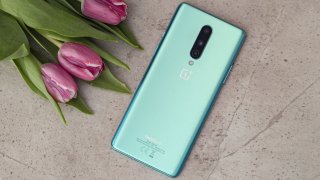
Mobile - May 20, 2020
Best 5G Phone: Upcoming 5G Mobile Phones Released In India
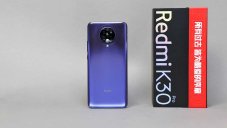
Review - Mar 30, 2020
Redmi K30 Pro Review: Top-End Specifications For An Affordable Price
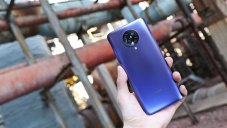
Mobile - Mar 28, 2020
You Can Now Overclock Redmi K30 Pro Display From 60Hz to 80Hz
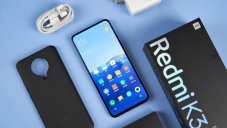
Mobile - Mar 27, 2020
Redmi K30 Pro Only Has 60Hz Display Instead of 120Hz; Here Is Why
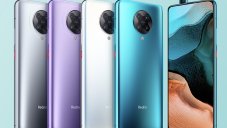
Mobile - Mar 24, 2020











